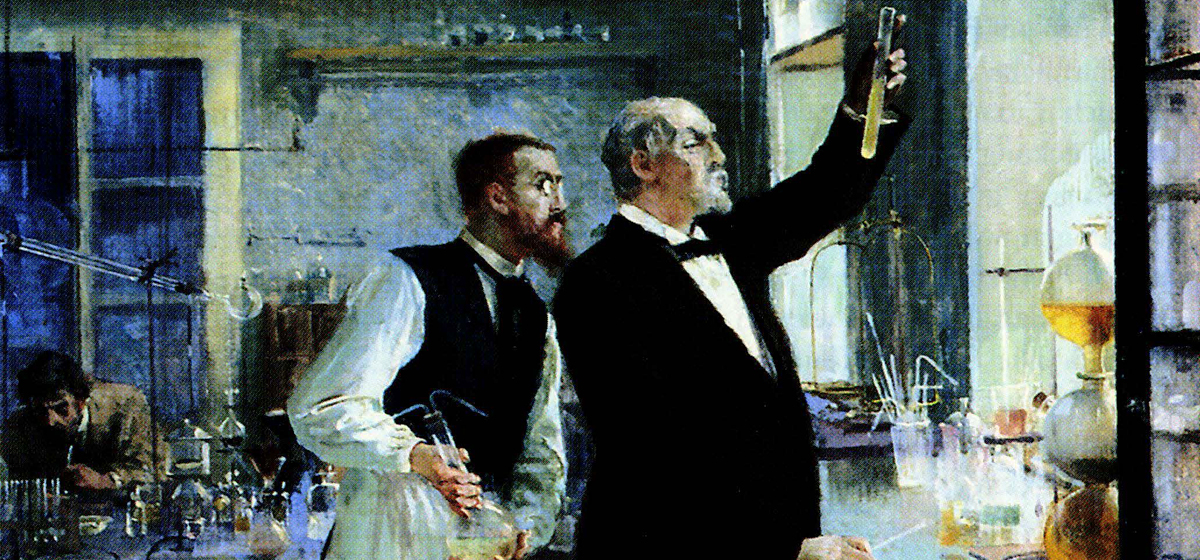
In the 16th and early 17th centuries first attempts were made to replace uroscopy by chemical and physical methods. In the 18th century the widespread interest in the chemistry of the urine led to the discovery of several normal and pathological urine-constituents. Hermann Boerhaave (1688-1738), the Dutch botanist, chemist and physician was the first to isolate the chemical urea from urine, and he also invented a method for the determination of the specific gravity of urine.
Early Clinical Chemistry
Philippus Aureolus Theophrastus Bombastus von Hohenheim (1493-1541), better known as Paracelsus, was probably the first physician who tried to establish the composition of urine. He attempted to analyse the urine and developed some ideas about its origin in the body. He diagnosed illness based on the quality and quantity of the distillates and the residues. It was around this time that the spagyrical or Iatrochemical School of diagnosis came into being.
By the early 17th century, chemical methods were described in great detail. During the next two centuries many fundamental chemical discoveries were made by men with pharmaceutical training. This was especially true in continental Europe, whereas in England advances in the field of chemistry were made by scientific amateurs.
Robert Boyle (1627-1691) was the prototype of a self-taught amateur scientist-investigator who thrived in England during the 17th century. Boyle was the first to develop a systematic procedure for identifying substances by means of physical characteristics such as solubility, specific gravity, crystal form and colour in flame, in addition to chemical characteristics.
During the second half of the 17th century it occurred to John Locke that chemical analysis of blood might have greater diagnostic value than mere inspection. He asked his friend Robert Boyle to undertake the preliminary work of blood analysis. Boyle published his results in his “Memoirs for the Natural History of Humane Blood, Especially the Spirit of that Liquor” in 1684 and devoted the preface “To the Very Ingenious and Learned Doctor J.L”.
By 1810, when William Hyde Wollaston (1766-1828) described cystine (the first amino acid to be discovered) he had already characterized five chemically distinct principal constituents of urinary calculi in humans. These were lithic or uric acid, ammonium magnesium phosphate (triple phosphate), calcium oxalate, calcium carbonate and sodium urate, which he had also discovered in gouty joints in 1797.
Only a few years later, in 1828, the laboratory synthesis of urea by the German chemist Friedrich Wöhler (1800-1882) ushered in the era of modern experimental organic chemistry. However, the modern era of urinalysis began with the accurate and scientifically correct reports of the British physician and pathologist Richard Bright (1789-1858).
An outstanding Viennese representative of early clinical chemistry was Johann Florian Heller (1813-1871). The trained chemist founded the first institute for pathological chemical research at the Vienna General Hospital. He carried out fundamental investigations of body fluids. Two tests of those devised by Heller, the ring-test for albuminuria and the test for hematuria, were used for more than a hundred years.
The Viennese urologist Robert Ultzmann (1841-1889), a disciple and later assistant of Heller, introduced clinical laboratory diagnostics into urology. Ultzmann also established the first urological department in the German-speaking world.
Development of Laboratory Diagnostics (1870-1950)
First the urologist made qualitative examinations of the urine, including chemical analysis, determination of the specific gravity of the urine, judgement of urinary sediment, and bacteriology. In the second half of the 19th century basic research quickly developed and the industry profited from this knowledge. A great number of laboratory devices were invented, and they were finally introduced into medical laboratories. Photometers, colourimeters and polarimeters were crucial in promoting medical laboratory diagnostics; in particular, cryoscopy based on the depression of the freezing point for measurement of osmolarity.
Renal function tests enabled the urologist to achieve quantitative results of the substances excreted into the urine. This clarified the function of the kidneys as well as the urinary tract.
All efforts to obtain the most accurate quantitative renal function test by using blood and urine culminated in the definition of the renal clearance test by the Dutch-American biochemist Donald Dexter Van Slyke (1883-1971).
Urinary cytology became indispensable in the management of patients with urothelial neoplasms. The first description of cancer cells in the urine was done by Vilém Dušan Lambl (1824-1895).
The founder of scientific oncologic urinary cytology was Georgios N. Papanicolaou (1883-1962).

